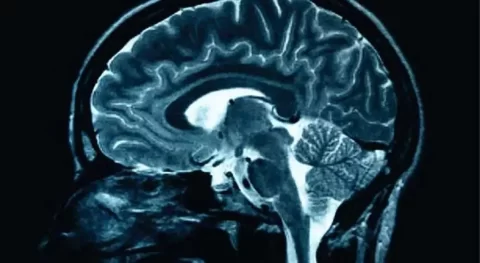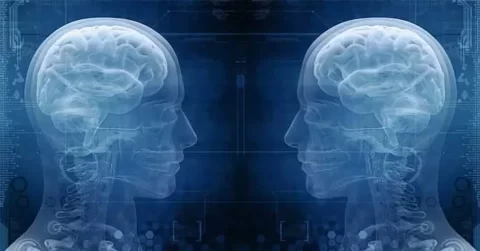There appears to be no limit to the advantages of exercise. Humans must move; otherwise, they come down with what is frequently referred to as the sitting disease. If most of your day is invested sitting, your general health will suffer, and it can cause weight gain, heart disease, and other severe chronic diseases, as you grow older. Lack of movement can result in cardiovascular disease, stroke, and a. general loss in quality of life in our senior years.
Everyone concurs that a workout is physically great for the. body. However, did you know that workout also has many advantages for the human brain? What happens in our brains when we exercise to have an excellent effect on our mental health?

What happens in the brain while we exercise
Exercise triggers our heart pressure to rise, which sends out a. signal to the brain that the body is under stress.
In response, a protein is released into our body called the “brain-derived neurotrophic aspect” (BDNF). This. protein is considered a “reset switch”– it repairs work memory neurons. ideas appear crystal clear after working out and putting the body at ease.
Simultaneously, endorphins are released into the brain, which. is meant to restrict the degree of discomfort and pain connected with workouts, even creating a sense of bliss. Like BDNF, endorphins are released in. action to the sensation of “stress” by exercise. The term “runner’s high” is the coin expression used to describe the surge of endorphins during a workout. that serves as a natural anti-depressant.
The same antidepressant-like impact from a “runner’s high” results in a decrease in stress level hormonal agents. In addition, a study. conducted in Stockholm showed that running stimulates cell development in the. the hippocampus is the part of the brain responsible for memory and learning.

How are our bodies and mind affected?
BDNF and endorphins give us a “pleased” feeling after a workout. These are somewhat addicting in nature, which is one reason some individuals seem consumed with exercising, although this “addiction” can be a healthy one.
Besides the short-term high from endorphins and BDNF, exercise has long-lasting benefits. Research studies show that individuals are better and. more productive throughout the day when they exercise. A Penn State research study revealed that individuals who had exercised within the previous month were happier and more productive at work compared to those who had not exercised ( but not to the same degree as those who had actually worked out earlier that. day). Individuals who exercise regularly have better moods than those who do not. and retain a stronger sense of calmness throughout the day.
Exercise affects the brain on numerous fronts.
Not only does it increase the heart rate that pumps more oxygen to the brain, but it likewise facilitates. the release of numerous hormones that provides a nourishing environment for the. growth of brain cells.
A research study performed at UCLA showed that exercising stimulates. the growth of new neuronal connections in a range of essential cortical locations. of the brain.

How To. Maximize The Benefits
20 Minutes
Based on this information, you might think that professional. athletes are the happiest people on the planet. A research study by the Department of Exercise Science at the University of Georgia revealed that. just 20 minutes of exercise is needed to reach that peak level of performance, good mood, and help with info processing and memory functions. The key is to turn it into a habit.
Psychological And Physical Connection
An essential mental and physical connection can increase the benefits of exercise. For instance, a workout that integrates different parts of brain activity, such as ballroom dancing, requires rhythm, technique, coordination, and thoughtfulness. Movement promotes cognitive health more than less intricate workouts like running or biking that do not necessarily engage diverse mental abilities.
Including Workout In Your Life
Working out in the morning before work or school helps to spike brain activity and prepares you for stresses you may sustain during your day. It permits increased retention of new details and knowledge and equips you to cope with complex scenarios that may develop.
Start off easy– even simply 5-10 minutes a day– and slowly increase the length and intensity of your exercise. Going to a group or class at the gym makes exercising more enjoyable, and it’s a fantastic method to discover new techniques. and to fulfill brand-new fitness-minded individuals.
However, being motivated to attend the fitness center frequently can be an obstacle. So try different workouts in your home and outdoors, and in your community, such as jogging, cycling, strength training, and so on. Variation is the spice of life, and the more you alter your routine, the better it’ll be for your motivation and body.
Numerous apps on your smartphone can supply you with exercise sets for all experience levels and even direct you through the workouts. In addition, apps like Map My Fitness and Fitness Buddy enable you to track your improvement, which is a terrific method to stay inspired as you view yourself. enhance.
Final Thoughts
Keep in mind that the health of your mind and body are closely connected, and exercise is one of the best– if not the best– methods to enhance mental and physical health in both the long term and short term.
The long-lasting benefits of exercising frequently are tremendous– the decreased risk of disease, enhanced mental health, more muscular body/muscles, minimized stress, enhanced digestion, improved blood circulation, and much more.
Even going on a 20-minute daily walk is much better than remaining sedentary. Find a training partner, schedule, and do whatever you must to get those endorphins and BDNF proteins pumping as frequently as possible!





